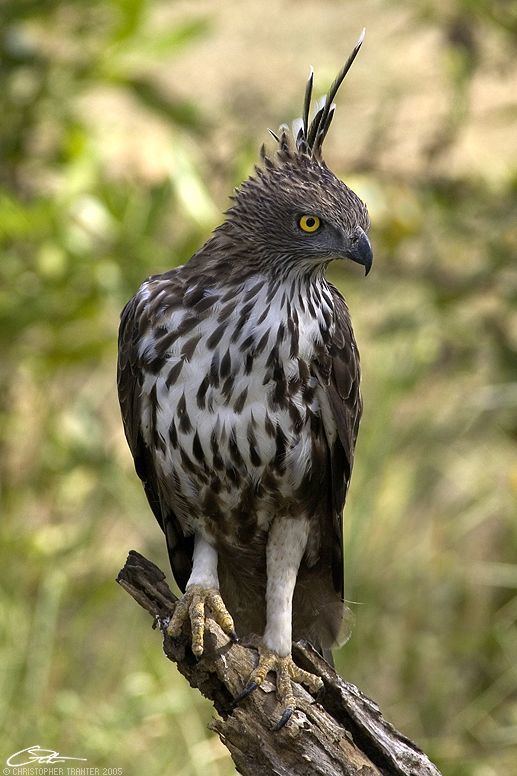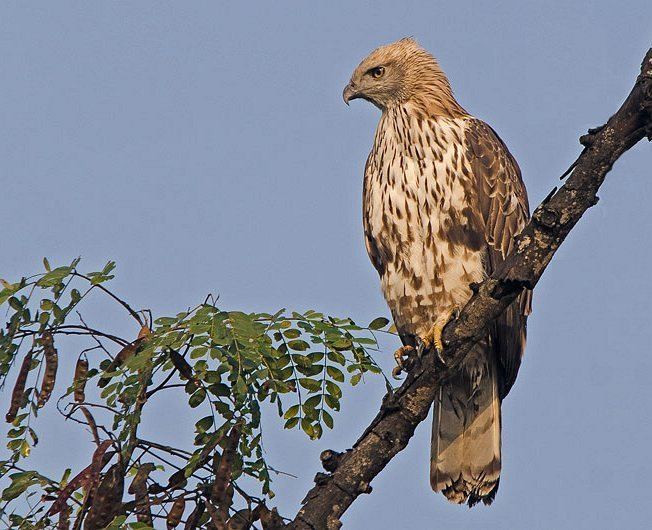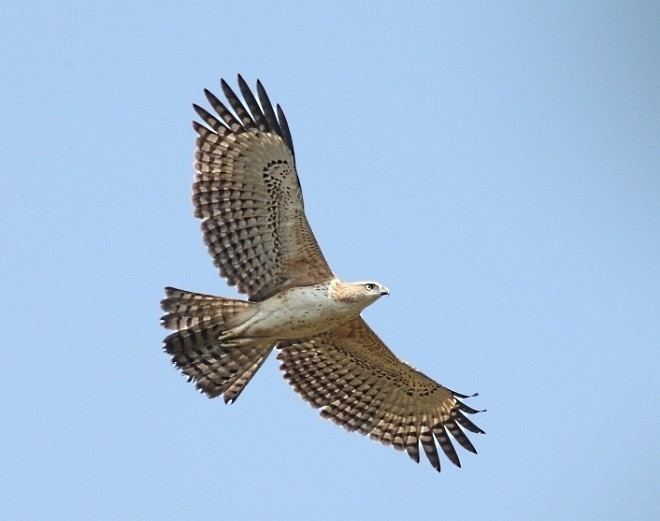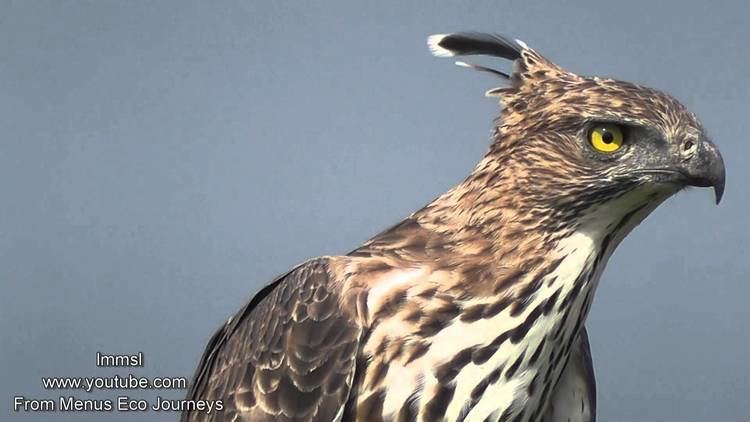Scientific name Nisaetus cirrhatus | ||
 | ||
Similar | ||
Nature trees and birds crested hawk eagle or changeable hawk eagle
The changeable hawk-eagle or crested hawk-eagle (Nisaetus cirrhatus) is a bird of prey species of the family Accipitridae. It was formerly placed in the genus Spizaetus, but studies pointed to the group being paraphyletic resulting in the Old World members being placed in Nisaetus (Hodgson, 1836) and separated from the New World species.
Contents
- Nature trees and birds crested hawk eagle or changeable hawk eagle
- Best hunted changeable hawk eagle yala national park
- Description
- Ecology
- Nesting
- Systematics
- References

Changeable hawk-eagles breed in the Indian subcontinent, mainly in India and Sri Lanka, and from the southeast rim of the Himalaya across Southeast Asia to Indonesia and the Philippines. This is a bird occurring singly (outside mating season) in open woodland, although island forms prefer a higher tree density. It builds a stick nest in a tree and lays a single egg.

Best hunted changeable hawk eagle yala national park
Description

The changeable hawk-eagle is a medium-large raptor at about 60–72 centimetres (24–28 in) in length with a 127–138 centimetres (50–54 in) wingspan, and a weight ranging from 1.2 to 1.9 kg (2.6 to 4.2 lb). It is a relatively slender forest eagle with some subspecies (especially N. c. limnaetus) being dimorphic giving the name "changeable". This and their complicated phylogeny further complicate precise identification.

Normally brown above, they have white below with barring on the undersides of the flight feathers and tail; black longitudinal streaks occur on the throat and chocolate streaks occur on the breast. Some subspecies have a crest of four feathers, but this is all but absent in others. The sexes are quite similar in their plumage, but males are about 15% smaller than females. The underparts and head of juveniles are whitish or buff with few dark streaks.

The wings are long and parallel-sided, and are held flat in flight, which helps to distinguish this species from the similar mountain hawk-eagle. In overhead flight, comparatively rounded wings (upturned at tip), longish tail, white body (spotted with brown) and grey underside of wings (streaked and spotted) are leading pointers.
Their call is a loud, high-pitched ki-ki-ki-ki-ki-ki-ki-ki-kee, beginning short, rising in crescendo, and ending in a scream.
Ecology
Changeable hawk-eagles eat mammals, birds, and reptiles. They keep a sharp lookout perched bolt upright on a bough amongst the canopy foliage of some high tree standing near a forest clearing. There, they wait for junglefowl, pheasants, hares, and other small animals coming out into the open. The bird then swoops down forcefully, strikes, and bears the prey away in its talons.
Nesting
Systematics
The Flores hawk-eagle has traditionally been treated as a subspecies of the changeable hawk-eagle, but it is now often treated as a separate species, N. floris.
Two distinct groups exist in the changeable hawk-eagle; one with crests and one without or with hardly visible crests. Dark morphs exist for some populations.
Changeable hawk-eagle
Crestless changeable hawk-eagle
Gamauf et al. (2005) analyzed mtDNA cytochrome b and control region sequence data of a considerable number of specimens of the crested hawk-eagle and some relatives. Despite the large sample, even the most conspicuous dichotomy - that between the crested and crestless groups - was not as well resolved as it might have been expected to be.
The three small-island taxa (N. c. andamanensis, N. c. vanheurni, and N. floris) also appear as monophyletic lineages. Their placement is even more unresolved, with N. floris being apparently a very ancient lineage. The other two seem quite certainly to derive from N. c. limnaeetus. The latter taxon has a confusing phylogeny. Different lineages exist that are apparently not stable in space and time, are best described as polytomy, from which the similar island taxa derive.
Obviously, N. c. limnaeetus does not represent a monophyletic lineage. Neither the biological nor the phylogenetic species concepts, nor phylogenetic systematics can be applied to satisfaction. The crested group apparently is close to becoming a distinct species. The island taxa derived from N. c. limnaeetus appear to have undergone founder effects, which has restricted their genetic diversity. In the continental population, genetic diversity is considerable, and the evolutionary pattern of the two studied genes did not agree, and neither did the origin of specimens show clear structures. N. c. limnaeetus thus is best considered a metapopulation.
Gamauf et al. (2005) therefore suggest the island taxa which are obviously at higher risk of extinction are, for conservation considered evolutionary significant units regardless of their systematic status. This case also demonstrates that a too-rigid interpretation of cladistics and the desire for monophyletic taxa, as well as universal application of single-species concept to all birds will undermine correct understanding of evolutionary relationships. It would even not be inconceivable to find mainland lineages to group closely with the western island taxa, if little genetic drift had occurred in the initial population. nonetheless, the divergence of this species' lineages seems to have taken place too recently to award them species status, as compared to the level of genetic divergence at which clades are usually considered distinct species.
N. c. limnaeetus appears for all that can be said with reasonable certainty basal pool of lineages in the crestless group that, despite not being monophyletic, should be considered a valid taxon as long as gene flow is possible through its range. In addition, as ancient DNA from museum specimens was used extensively, the possibility of ghost lineages must be considered. If it is assumed that all or most of the ancient lineages still exist today, considerable recombination must have taken place as the two genes' phylogenies do not agree much, indicating a healthy level of gene flow. Whether this still holds true today remains to be determined.
